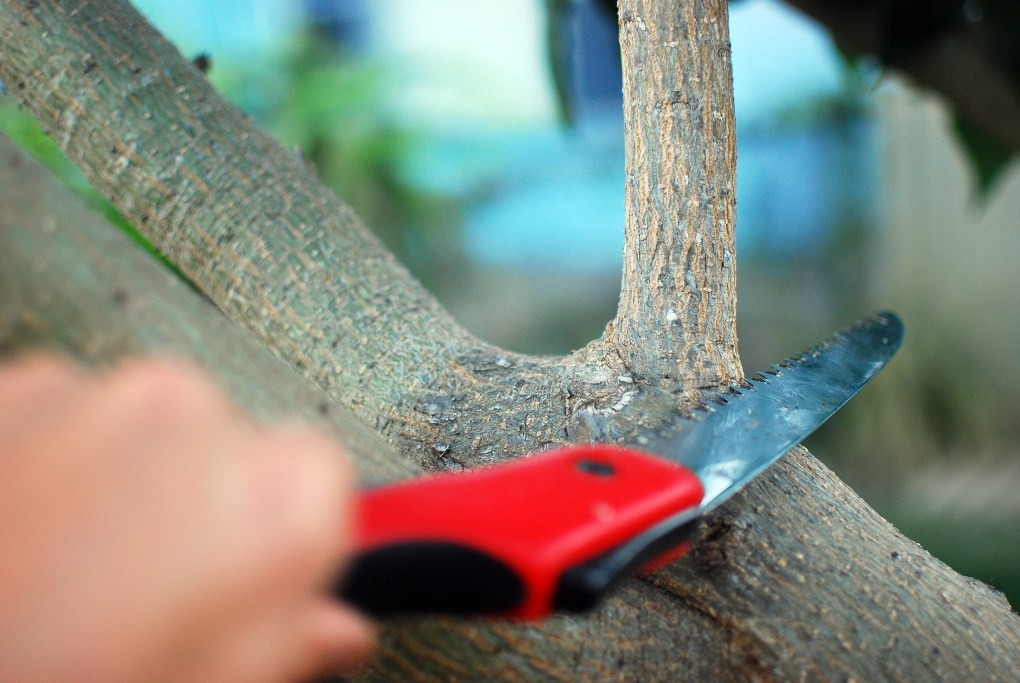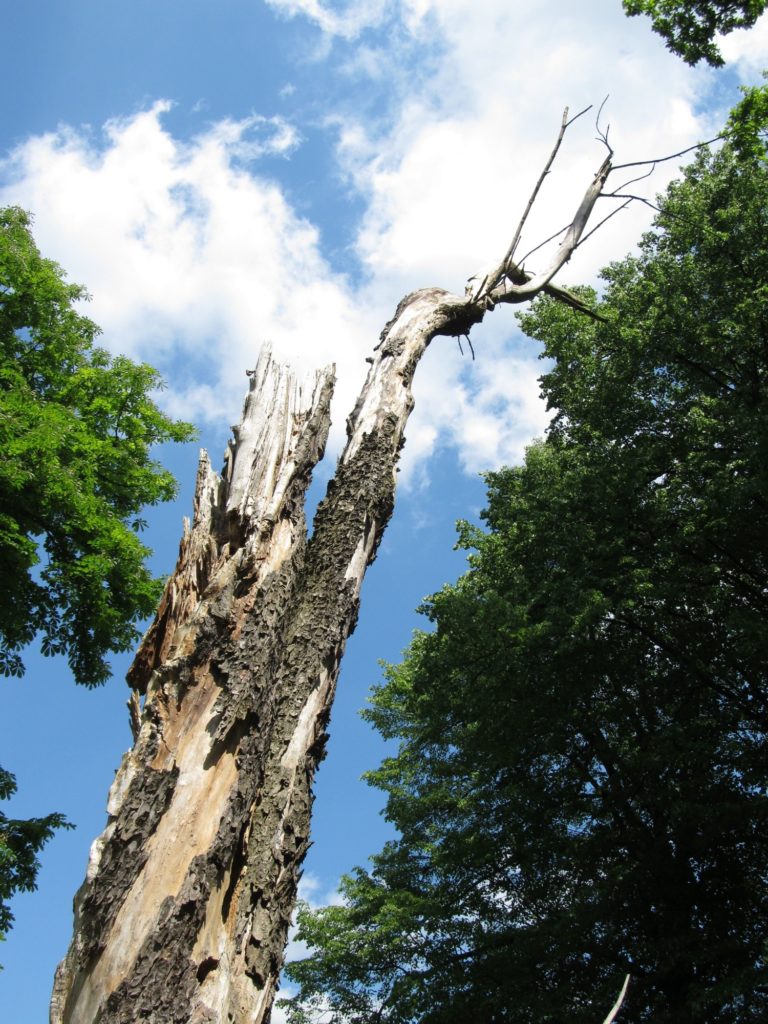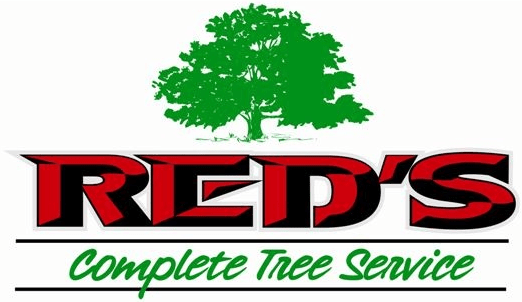From buildings to paper, trees are an important part of our everyday life, so it is not surprising that we have a stronger connection to trees than almost any other plant. The death of a flower may go unnoticed, but a dying tree is something we find alarming and sad. Just as other organisms do, trees die, and will show some definite signs when they are dead or dying. If you think you have a sick or dying tree on your hands, give us a call at Red’s Tree Service so we can nurse them back to health!
Signs That a Tree is Dying
The signs that a tree is dying are many, and differ greatly depending on their type. A lack of leaves or a reduction in the number of leaves produced on all or part of the tree is one sure sign. Other signs of a sick tree include the bark becoming brittle and falling off the tree, limbs dying and falling off or the trunk becoming spongy or brittle. Look for signs of a dying tree in the following areas:
Leaves: Deciduous trees lose all their leaves each winter as opposed to evergreen trees who never lose all their leaves at once. Deciduous trees may be dying if they drop their leaves or if their leaves turn brown and brittle during the growing season. Yellow leaves on a tree that usually has green leaves is also a sign of a problem. If an evergreen tree is sick it will start to show red or brown needles, and once the top third of the plant has needles that are red or brown the tree is dying. Yellow needles are a sign of stress and indicate the tree may be sick or dying.
Branches: A branch that has lost all of its bark means that that branch is dead. A branch that starts to lose its bark is dying and needs help. Branches will break off when dead in extreme cases, and the tree will die when too many of its branches break off. However, some trees, such as pecan trees, are self-pruning and the lower branches will fall off when nothing is wrong with the tree. Fungus may grow on dead branches. It only grows on decaying wood, so if you see fungus it means that the part of the branch it is on is dead. Wood boring insects will also move in when a tree is dying. You will know they have moved in when the branches start showing holes where the insects have made homes or bored holes to eat the wood.

Bark: Bark becomes loose and starts to fall off of a dying tree. A tree may sport fungus or holes where wood-boring insects have made homes in it. Brittle bark is also a bad sign. Bark beetles indicate dying bark.
Trunk: Places that are bare of bark are a sign of problems. Carpenter ants are a sign of deadwood. Rows of holes from boring insects are also a sign that the tree is in trouble. Fungus on the trunk is a sign of dead and decaying wood.
Roots: When a tree is dying its roots may turn slimy and host fungus and insects such as boring insects and carpenter ants, and become brittle and break, allowing the tree to fall over. Another sign of a sick or dying tree is knots in their fine fibers. Red’s Tree Service is here for you and will help diagnose any issues your trees are having!
What Causes a Dying Tree?
While most trees are hardy for decades or even centuries, they can be affected by tree diseases, insects, fungus and even old age. Tree diseases vary from species to species, as do the types of insects and fungus that can hurt various types of trees. Much like animals, the mature size of the tree generally determines how long the lifespan of a tree is. Small ornamental trees will typically only live for 15 to 20 years, while maples can live 75 to 100 years. Oaks and pine trees can live up to two or three centuries. Some trees, like Douglas Firs and Giant Sequoias, can live a millennia or two. A dying tree that is dying from old age cannot be helped.
What to Do for a Sick Tree

If your tree has you asking what does a dying tree look like and is my tree dying, the best thing you can do is call Red’s Tree Service. We specialize in diagnosing tree diseases and can help a sick tree get better. We will be able to tell you if what you are seeing on a tree is a sign that the tree is dying. We can help your dying tree get well again!
At Red’s Tree Service we treat every yard and property like it’s our own. Our goal is to provide the best possible solution for both the trees in question and the people who own them. Excellent tree care and customer service are our top two priorities. Our equipment is gentle on your land and can handle any size of project, whether it is one tree or thousands of trees.
Headquartered in Memphis, we serve the entire Mid-South Area. Our arborists are well-trained to provide you with expert care for your property and your trees with their many years of experience.
